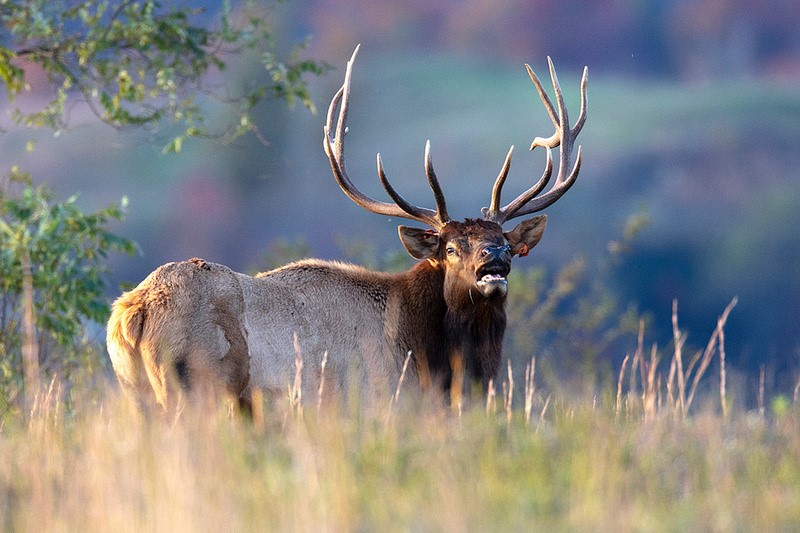COMMENTARY BY DR. DAVE SAMUEL
Maybe it’s just me, but it seems that there are more lawsuits happening in all kinds of situations.
Disgruntled employees, all types of political situations, products that don’t work, disgruntled professional athletes etc., etc. Such suits are also trickling over into wildlife situations. Here is an example:
Point Reyes National Seashore is a 71,000-acre national park located on a peninsula near San Francisco. It is maintained by the US National Park Service as a nature preserve and was established in 1962 to protect the area from development.
The peninsula includes coastal beaches, estuaries and uplands. Parts of the park are private farms and ranches that have grazing cattle and were there when the park was formed.
Three major hiking trails are within the park and heavily used by the public.
Tule elk are native to the region and are found in the northern part of the park. Ten elk were brought to the park in 1978 and are mostly behind a 2,600-acre fence.
The fence was placed to keep the elk from the cattle ranches within the park. That population grew to 445 by 2009, however, a drought in 2012-2015 caused a number to die, leaving 293 animals.
All of this activity brought a lot of press to the park, as people were very concerned about the dying elk.
In the fall of 2020, a drought again occurred, and this led to concerned citizens bringing water to the elk. Such an activity was not the citizen’s prerogative and was illegal, though well meaning.
Because of the intense interest in the elk, the park service developed a 1998 Tule Elk Management Plant and it discussed the fact that the elk population would fluctuate from time to time. Numbers would go up when conditions were good and would go down when conditions were bad.
There are three herds of elk in the protected area. In 2020, one herd dropped from 164 to 155 while the second herd remained stable. The third herd increased from 138 to 139.
None of these changes are significant, even though forage for the elk is over browsed. Here is where things get sticky.
The National Park Service and the California Department of Fish and Wildlife believe that population changes are not due to a lack of water, but proving that with scientific data is difficult and may not be possible.
I would suggest to you that situations where state wildlife agencies are managing wildlife, and numbers go down, happen all the time. However, there is no way the state agency can prove a cause, other than controlling hunter numbers.
But there is no elk hunting at Point Reyes. Over the years, employees of the park and game agency monitored water availability and found adequate water supplies. These two organizations did however note that drought was affecting forage. Again, proving this problem would be difficult.
During this time, protestors marched on a nearby road, voicing their displeasure of the elk management. They felt the drop in numbers of elk from 2009 to 2015 was due to mismanagement.
Their complaints led to a federal hearing on the situation where park visitors and photographers testified. One witness stated that a dead elk was found in a fence and this meant that the elk were trying to escape the area to get water and forage.
Others noted that poisonous plants were found in a few dead elk and this meant that the elk were resorting to eating poisonous forage because they were starving.
A lawsuit was filed by the Animal Legal Defense Fund and three park visitors. A temporary restraining order required the park to protect elk from extreme hunger and thirst. The Park Service then installed water troughs in the area (note, previous surveys showed adequate water). Another issue was that the park service was operating under an old management plan (1998) that needed updating.
My guess is that the older plan is not that defective and that elk are not attempting to go over the fence in search of water and forage.
Wild animals get caught in fences all the time. Crossing highways, crossing farm fields, etc. However, the result of the legal intervention is that more water will be made available, and the management plan will be updated. My point in writing this column is that in this situation, private citizens made observations, got lots of publicity, went to court and forced the park service to do things for the elk that may or may not have been needed and probably won’t change the fact that wildlife numbers go up and down depending on weather.
In these days of change, watch for more situations where the public will make observations of wildlife and will use the law to question wildlife plans created by trained wildlife biologists.
If someone finds a dead animal and feels it died of starvation, a law suit could occur. The ramifications of such situations could hamstring a state wildlife agency. It’s happened recently and will happen again, and more often.




